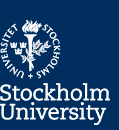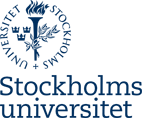Geographers are involved in community planning in aspects concerned with climatic change, flood risk and storm damage, as well as with developmental issues such as innovations in farming, city expansion, health matters and refugees. Work areas are to be found both in Sweden and abroad (SIDA, Swedish International Development Cooperation Agency, Red Cross, Swedish Rescue Services Agency, etc.). As the impact of human induced changes to our environment becomes more and more intrusive, the geographer’s role takes on a new and important dimension. Geographers contribute to planning future communities and are key participants in the creation of a sustainable future for people on the regional, national and global planes. The discipline Geography encompasses environmental and social questions that are linked to world’s diversity of municipal and rural environments, populations, and living conditions. Geography is a science that since the time of the ancient Greeks has aimed to describe, analyse and explain the earth as the human habitat. Man’s living conditions and environment are largely dependent on whereabouts on the surface of the earth he lives, and there are clear connections between the differing development patterns of different societies and the surrounding natural environment and its exploitation. Knowledge of the connections and interplay between humankind, socio-cultural development and the natural environment constitutes the core of the discipline Geography. As a result of increasing globalisation in interdisciplinary research, business, international trade and economics, tourism, land management and environmental work, education and the mass media, geographical skills are in high demand. There is furthermore a substantial increase in the use of geographic information systems (GIS) and methods of investigation that require the use of satellite imagery and aerial photography (remote sensing).
The geography courses are given in a collaboration including both geographical departments at Stockholm University – the Department of Physical Geography (NG) and the Department of Human Geography (KG) – and faculty from both departments teach the courses. All bachelor level courses in geography are administered by the Department of Physical Geography.
First Cycle – bachelor level
For a bachelor's degree in geography students are recommend to follow the Bachelor’s Programme in Geography. It is also possible to do a bachelor's degree by studying separate courses.
Second Cycle – master level
For a master's degree in geography students follow the Master’s Programme in Globalization, Environment and Social Change.
Teacher training
Stockholm University teacher education programmes are offered in Swedish. However, there are teacher education courses in English offered as separate courses. The geography courses included in the teacher education programmes are predominantly run in Swedish; largely the First Cycle modules are in Swedish and the Second Cycle modules are in English.
Stockholm University teacher education programmes for future geography teachers focus on teaching in the later part of the compulsory school or the upper secondary school. Students study geography and history, geography and mathematics, or geography and religion. For students who have already studied geography there is a bridging teacher education programme. In addition students can study the teacher education programme at the Swedish School of Sport and Health Sciences (GIH) to get teacher training in geography (at Stockholm University) and in physical education and health (at GIH).



